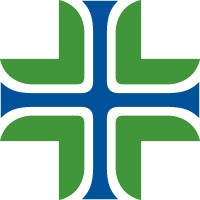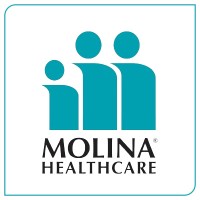
UF Health Central Florida Company Cyber Security Posture
ufhealth.orgUF Health Central Florida, formerly known as Central Florida Health and acquired by University of Florida Health in January 2020, is an award-winning, not-for-profit health care system and the largest, most comprehensive provider of health care services in the region. We care for patients in Lake, Sumter, and Marion counties through inpatient acute hospital services at UF Health The Villages® Hospital and UF Health Leesburg Hospital, inpatient rehabilitation services at UF Health The Villages® Rehabilitation Hospital and diagnostic laboratory services at several locations. As a premier health care provider, UF Health Central Florida takes pride in providing progressive, innovative technology, along with building strong relationships with patients, families, physicians and residents of the communities we serve. To learn more, visit www.CentralFlorida.UFHealth.org
UHCF Company Details
central-florida-health-alliance
763 employees
8224.0
62
Hospitals and Health Care
ufhealth.org
Scan still pending
UF _1012725
In-progress
Between 800 and 900
This score is AI-generated and less favored by cyber insurers, who prefer the TPRM score.
 UHCF Global Score
UHCF Global Score.png)

UF Health Central Florida Company Scoring based on AI Models
| Model Name | Date | Description | Current Score Difference | Score |
|---|---|---|---|---|
| AVERAGE-Industry | 03-12-2025 | This score represents the average cybersecurity rating of companies already scanned within the same industry. It provides a benchmark to compare an individual company's security posture against its industry peers. | N/A | Between 800 and 900 |
UF Health Central Florida Company Cyber Security News & History
| Entity | Type | Severity | Impact | Seen | Url ID | Details | View |
|---|---|---|---|---|---|---|---|
| UF Health Central Florida | Ransomware | 100 | 7 | 06/2021 | UFH2252111122 | Link | |
Rankiteo Explanation : Attack that could injure or kill peopleDescription: UF Health Central Florida has suffered a reported ransomware attack that forced two hospitals to shut down portions of their IT network. The University of Florida Health, also known as UF Health, is a healthcare network of hospitals and physician practices that provide care to countries throughout Florida. UF Health The Villages Hospital and UF Health Leesburg Hospital suffered a cyberattack preventing access to computer systems and email. | |||||||
| UF Health Central Florida | Ransomware | 85 | 3 | 06/2021 | UFH221625123 | Link | |
Rankiteo Explanation : Attack with significant impact with internal employee data leaksDescription: UF Health Central Florida has suffered a reported ransomware attack that forced two hospitals to shut down portions of their IT network. The University of Florida Health, also known as UF Health, is a healthcare network of hospitals and physician practices that provide care to countries throughout Florida. UF Health The Villages Hospital and UF Health Leesburg Hospital suffered a cyberattack preventing access to computer systems and email. | |||||||
UF Health Central Florida Company Subsidiaries

UF Health Central Florida, formerly known as Central Florida Health and acquired by University of Florida Health in January 2020, is an award-winning, not-for-profit health care system and the largest, most comprehensive provider of health care services in the region. We care for patients in Lake, Sumter, and Marion counties through inpatient acute hospital services at UF Health The Villages® Hospital and UF Health Leesburg Hospital, inpatient rehabilitation services at UF Health The Villages® Rehabilitation Hospital and diagnostic laboratory services at several locations. As a premier health care provider, UF Health Central Florida takes pride in providing progressive, innovative technology, along with building strong relationships with patients, families, physicians and residents of the communities we serve. To learn more, visit www.CentralFlorida.UFHealth.org
Access Data Using Our API

Get company history
.png)
UHCF Cyber Security News
UF moves forward with site for new campus in Jacksonville
“UF has a bold vision for our campus in Jacksonville. This will be a site that will give our students an opportunity to learn and thrive in a ...
UF Health removed from United Healthcare provider network after failed negotiations
UF Health removed from United Healthcare provider network after failed negotiations ... UF Health hospitals and physician groups in Gainesville, ...
UF Health Heart & Vascular Hospital
Notice of Data Breach: A third-party vendor was impacted by a cybersecurity incident that may have affected certain patients' protected ...
UF Health still investigating 'cybersecurity event' related to Central Florida servers
Unusual activity on UF Health Central Florida's computer systems has now been linked to 'a cybersecurity event.'
Cyberattacks At UF Hospitals In Leesburg, The Villages Under Investigation
No patient or personnel records are believed to have been compromised or shared in the events at The Villages Regional Hospital and Leesburg ...
UF hospitals in The Villages and Leesburg revert to paper records after cyberattack
UF Health has confirmed that a cyberattack was detected at its hospitals in Leesburg and The Villages on Monday night.
UF Health Leesburg and UF Health The Villages fall victim to “cyber security event”
The UF Health spokesman Frank Faust did not confirm that what he called a “cybersecurity event” was a ransomware attack or if there is a demand ...
UF Health employees: Cyber attack now impacting patient care
Two cybersecurity firms WESH 2 News spoke with say it appears to be a ransomware attack, in which a phishing email is sent to staff and, when ...
North Central
Florida's North Central region is home to one of the nation's top-ranked public universities, which, just one year ago, joined the handful of ...

UHCF Similar Companies

Brookdale
Relationships are the heart of our culture. They help us create a sense of family among our residents, associates and patients. Integrity is our soul. It guides us to be open in our communication with each other, and it enables us to make the right decisions for the people who have entrusted us with

Providence
Every day, 119,000 compassionate caregivers serve patients and communities through Providence St. Joseph Health, a national, Catholic, not-for-profit health system, driven by a belief that health is a human right. Rooted in the founding missions of the Sisters of Providence and the Sisters of St.

Stanford Health Care
Stanford Health Care, with multiple facilities throughout the Bay Area, is internationally renowned for leading edge and coordinated care in cancer care, neurosciences, cardiovascular medicine, surgery, organ transplant, medicine specialties, and primary care. Throughout its history, Stanford has be

Molina Healthcare
Molina Healthcare is a FORTUNE 500 company that is focused exclusively on government-sponsored health care programs for families and individuals who qualify for government sponsored health care. Molina Healthcare contracts with state governments and serves as a health plan providing a wide range o

Unimed BH
A Unimed-BH é a operadora que mais investe na saúde dos mineiros. São 6 milhões de consultas médicas, 120 mil internações hospitalares e 13 milhões de exames e terapias complementares realizados em um ano. E a Cooperativa está sempre inovando, com serviços diferenciados, como o Agendamento On-lin

Kindred
Kindred’s mission is to help our patients reach their highest potential for health and healing with intensive medical and rehabilitative care through a compassionate patient experience. Kindred’s 61 long-term acute care hospitals (LTACHs), along with 18 community-based, short-term acute care hospit

Frequently Asked Questions (FAQ) on Cybersecurity Incidents
UHCF CyberSecurity History Information
Total Incidents: According to Rankiteo, UHCF has faced 2 incidents in the past.
Incident Types: The types of cybersecurity incidents that have occurred include ['Ransomware'].
Total Financial Loss: The total financial loss from these incidents is estimated to be {total_financial_loss}.
Cybersecurity Posture: The company's overall cybersecurity posture is described as UF Health Central Florida, formerly known as Central Florida Health and acquired by University of Florida Health in January 2020, is an award-winning, not-for-profit health care system and the largest, most comprehensive provider of health care services in the region. We care for patients in Lake, Sumter, and Marion counties through inpatient acute hospital services at UF Health The Villages® Hospital and UF Health Leesburg Hospital, inpatient rehabilitation services at UF Health The Villages® Rehabilitation Hospital and diagnostic laboratory services at several locations. As a premier health care provider, UF Health Central Florida takes pride in providing progressive, innovative technology, along with building strong relationships with patients, families, physicians and residents of the communities we serve. To learn more, visit www.CentralFlorida.UFHealth.org.
Detection and Response: The company detects and responds to cybersecurity incidents through {description_of_detection_and_response_process}.
Incident Details
Incident 1: Ransomware Attack
Title: {Incident_Title}
Description: {Brief_description_of_the_incident}
Date Detected: {Detection_Date}
Date Publicly Disclosed: {Disclosure_Date}
Date Resolved: {Resolution_Date}
Type: {Type_of_Attack}
Attack Vector: {Attack_Vector}
Vulnerability Exploited: {Vulnerability}
Threat Actor: {Threat_Actor}
Motivation: {Motivation}
Incident 2: Data Breach
Title: {Incident_Title}
Description: {Brief_description_of_the_incident}
Date Detected: {Detection_Date}
Date Publicly Disclosed: {Disclosure_Date}
Date Resolved: {Resolution_Date}
Type: {Type_of_Attack}
Attack Vector: {Attack_Vector}
Vulnerability Exploited: {Vulnerability}
Threat Actor: {Threat_Actor}
Motivation: {Motivation}
Common Attack Types: The most common types of attacks the company has faced are ['Ransomware'].
Identification of Attack Vectors: The company identifies the attack vectors used in incidents through {description_of_identification_process}.
Impact of the Incidents
Incident 1: Ransomware Attack
Financial Loss: {Financial_Loss}
Data Compromised: {Data_Compromised}
Systems Affected: {Systems_Affected}
Downtime: {Downtime}
Operational Impact: {Operational_Impact}
Conversion Rate Impact: {Conversion_Rate_Impact}
Revenue Loss: {Revenue_Loss}
Customer Complaints: {Customer_Complaints}
Brand Reputation Impact: {Brand_Reputation_Impact}
Legal Liabilities: {Legal_Liabilities}
Identity Theft Risk: {Identity_Theft_Risk}
Payment Information Risk: {Payment_Information_Risk}
Incident 2: Data Breach
Financial Loss: {Financial_Loss}
Data Compromised: {Data_Compromised}
Systems Affected: {Systems_Affected}
Downtime: {Downtime}
Operational Impact: {Operational_Impact}
Conversion Rate Impact: {Conversion_Rate_Impact}
Revenue Loss: {Revenue_Loss}
Customer Complaints: {Customer_Complaints}
Brand Reputation Impact: {Brand_Reputation_Impact}
Legal Liabilities: {Legal_Liabilities}
Identity Theft Risk: {Identity_Theft_Risk}
Payment Information Risk: {Payment_Information_Risk}
Average Financial Loss: The average financial loss per incident is {average_financial_loss}.
Commonly Compromised Data Types: The types of data most commonly compromised in incidents are {list_of_commonly_compromised_data_types}.
Incident 1: Ransomware Attack
Entity Name: {Entity_Name}
Entity Type: {Entity_Type}
Industry: {Industry}
Location: {Location}
Size: {Size}
Customers Affected: {Customers_Affected}
Incident 2: Data Breach
Entity Name: {Entity_Name}
Entity Type: {Entity_Type}
Industry: {Industry}
Location: {Location}
Size: {Size}
Customers Affected: {Customers_Affected}
Response to the Incidents
Incident 1: Ransomware Attack
Incident Response Plan Activated: {Yes/No}
Third Party Assistance: {Yes/No}
Law Enforcement Notified: {Yes/No}
Containment Measures: {Containment_Measures}
Remediation Measures: {Remediation_Measures}
Recovery Measures: {Recovery_Measures}
Communication Strategy: {Communication_Strategy}
Adaptive Behavioral WAF: {Adaptive_Behavioral_WAF}
On-Demand Scrubbing Services: {On_Demand_Scrubbing_Services}
Network Segmentation: {Network_Segmentation}
Enhanced Monitoring: {Enhanced_Monitoring}
Incident 2: Data Breach
Incident Response Plan Activated: {Yes/No}
Third Party Assistance: {Yes/No}
Law Enforcement Notified: {Yes/No}
Containment Measures: {Containment_Measures}
Remediation Measures: {Remediation_Measures}
Recovery Measures: {Recovery_Measures}
Communication Strategy: {Communication_Strategy}
Adaptive Behavioral WAF: {Adaptive_Behavioral_WAF}
On-Demand Scrubbing Services: {On_Demand_Scrubbing_Services}
Network Segmentation: {Network_Segmentation}
Enhanced Monitoring: {Enhanced_Monitoring}
Incident Response Plan: The company's incident response plan is described as {description_of_incident_response_plan}.
Third-Party Assistance: The company involves third-party assistance in incident response through {description_of_third_party_involvement}.
Data Breach Information
Incident 2: Data Breach
Type of Data Compromised: {Type_of_Data}
Number of Records Exposed: {Number_of_Records}
Sensitivity of Data: {Sensitivity_of_Data}
Data Exfiltration: {Yes/No}
Data Encryption: {Yes/No}
File Types Exposed: {File_Types}
Personally Identifiable Information: {Yes/No}
Prevention of Data Exfiltration: The company takes the following measures to prevent data exfiltration: {description_of_prevention_measures}.
Handling of PII Incidents: The company handles incidents involving personally identifiable information (PII) through {description_of_handling_process}.
Ransomware Information
Incident 1: Ransomware Attack
Ransom Demanded: {Ransom_Amount}
Ransom Paid: {Ransom_Paid}
Ransomware Strain: {Ransomware_Strain}
Data Encryption: {Yes/No}
Data Exfiltration: {Yes/No}
Ransom Payment Policy: The company's policy on paying ransoms in ransomware incidents is described as {description_of_ransom_payment_policy}.
Data Recovery from Ransomware: The company recovers data encrypted by ransomware through {description_of_data_recovery_process}.
Regulatory Compliance
Incident 1: Ransomware Attack
Regulations Violated: {Regulations_Violated}
Fines Imposed: {Fines_Imposed}
Legal Actions: {Legal_Actions}
Regulatory Notifications: {Regulatory_Notifications}
Incident 2: Data Breach
Regulations Violated: {Regulations_Violated}
Fines Imposed: {Fines_Imposed}
Legal Actions: {Legal_Actions}
Regulatory Notifications: {Regulatory_Notifications}
Regulatory Frameworks: The company complies with the following regulatory frameworks regarding cybersecurity: {list_of_regulatory_frameworks}.
Ensuring Regulatory Compliance: The company ensures compliance with regulatory requirements through {description_of_compliance_measures}.
Lessons Learned and Recommendations
Incident 1: Ransomware Attack
Lessons Learned: {Lessons_Learned}
Incident 2: Data Breach
Lessons Learned: {Lessons_Learned}
Incident 1: Ransomware Attack
Recommendations: {Recommendations}
Incident 2: Data Breach
Recommendations: {Recommendations}
Key Lessons Learned: The key lessons learned from past incidents are {list_of_key_lessons_learned}.
Implemented Recommendations: The company has implemented the following recommendations to improve cybersecurity: {list_of_implemented_recommendations}.
References
Additional Resources: Stakeholders can find additional resources on cybersecurity best practices at {list_of_additional_resources}.
Investigation Status
Incident 1: Ransomware Attack
Investigation Status: {Investigation_Status}
Incident 2: Data Breach
Investigation Status: {Investigation_Status}
Communication of Investigation Status: The company communicates the status of incident investigations to stakeholders through {description_of_communication_process}.
Stakeholder and Customer Advisories
Incident 1: Ransomware Attack
Stakeholder Advisories: {Stakeholder_Advisories}
Customer Advisories: {Customer_Advisories}
Incident 2: Data Breach
Stakeholder Advisories: {Stakeholder_Advisories}
Customer Advisories: {Customer_Advisories}
Advisories Provided: The company provides the following advisories to stakeholders and customers following an incident: {description_of_advisories_provided}.
Initial Access Broker
Incident 1: Ransomware Attack
Entry Point: {Entry_Point}
Reconnaissance Period: {Reconnaissance_Period}
Backdoors Established: {Backdoors_Established}
High Value Targets: {High_Value_Targets}
Data Sold on Dark Web: {Yes/No}
Incident 2: Data Breach
Entry Point: {Entry_Point}
Reconnaissance Period: {Reconnaissance_Period}
Backdoors Established: {Backdoors_Established}
High Value Targets: {High_Value_Targets}
Data Sold on Dark Web: {Yes/No}
Monitoring and Mitigation of Initial Access Brokers: The company monitors and mitigates the activities of initial access brokers through {description_of_monitoring_and_mitigation_measures}.
Post-Incident Analysis
Incident 1: Ransomware Attack
Root Causes: {Root_Causes}
Corrective Actions: {Corrective_Actions}
Incident 2: Data Breach
Root Causes: {Root_Causes}
Corrective Actions: {Corrective_Actions}
Post-Incident Analysis Process: The company's process for conducting post-incident analysis is described as {description_of_post_incident_analysis_process}.
Corrective Actions Taken: The company has taken the following corrective actions based on post-incident analysis: {list_of_corrective_actions_taken}.
Additional Questions
General Information
Ransom Payment History: The company has {paid/not_paid} ransoms in the past.
Last Ransom Demanded: The amount of the last ransom demanded was {last_ransom_amount}.
Last Attacking Group: The attacking group in the last incident was {last_attacking_group}.
Incident Details
Most Recent Incident Detected: The most recent incident detected was on {most_recent_incident_detected_date}.
Most Recent Incident Publicly Disclosed: The most recent incident publicly disclosed was on {most_recent_incident_publicly_disclosed_date}.
Most Recent Incident Resolved: The most recent incident resolved was on {most_recent_incident_resolved_date}.
Impact of the Incidents
Highest Financial Loss: The highest financial loss from an incident was {highest_financial_loss}.
Most Significant Data Compromised: The most significant data compromised in an incident was {most_significant_data_compromised}.
Most Significant System Affected: The most significant system affected in an incident was {most_significant_system_affected}.
Response to the Incidents
Third-Party Assistance in Most Recent Incident: The third-party assistance involved in the most recent incident was {third_party_assistance_in_most_recent_incident}.
Containment Measures in Most Recent Incident: The containment measures taken in the most recent incident were {containment_measures_in_most_recent_incident}.
Data Breach Information
Most Sensitive Data Compromised: The most sensitive data compromised in a breach was {most_sensitive_data_compromised}.
Number of Records Exposed: The number of records exposed in the most significant breach was {number_of_records_exposed}.
Ransomware Information
Highest Ransom Demanded: The highest ransom demanded in a ransomware incident was {highest_ransom_demanded}.
Highest Ransom Paid: The highest ransom paid in a ransomware incident was {highest_ransom_paid}.
Regulatory Compliance
Highest Fine Imposed: The highest fine imposed for a regulatory violation was {highest_fine_imposed}.
Most Significant Legal Action: The most significant legal action taken for a regulatory violation was {most_significant_legal_action}.
Lessons Learned and Recommendations
Most Significant Lesson Learned: The most significant lesson learned from past incidents was {most_significant_lesson_learned}.
Most Significant Recommendation Implemented: The most significant recommendation implemented to improve cybersecurity was {most_significant_recommendation_implemented}.
References
Most Recent Source: The most recent source of information about an incident is {most_recent_source}.
Most Recent URL for Additional Resources: The most recent URL for additional resources on cybersecurity best practices is {most_recent_url}.
Investigation Status
Current Status of Most Recent Investigation: The current status of the most recent investigation is {current_status_of_most_recent_investigation}.
Stakeholder and Customer Advisories
Most Recent Stakeholder Advisory: The most recent stakeholder advisory issued was {most_recent_stakeholder_advisory}.
Most Recent Customer Advisory: The most recent customer advisory issued was {most_recent_customer_advisory}.
Initial Access Broker
Most Recent Entry Point: The most recent entry point used by an initial access broker was {most_recent_entry_point}.
Most Recent Reconnaissance Period: The most recent reconnaissance period for an incident was {most_recent_reconnaissance_period}.
Post-Incident Analysis
Most Significant Root Cause: The most significant root cause identified in post-incident analysis was {most_significant_root_cause}.
Most Significant Corrective Action: The most significant corrective action taken based on post-incident analysis was {most_significant_corrective_action}.
What Do We Measure?
















Every week, Rankiteo analyzes billions of signals to give organizations a sharper, faster view of emerging risks. With deeper, more actionable intelligence at their fingertips, security teams can outpace threat actors, respond instantly to Zero-Day attacks, and dramatically shrink their risk exposure window.
These are some of the factors we use to calculate the overall score:
Identify exposed access points, detect misconfigured SSL certificates, and uncover vulnerabilities across the network infrastructure.
Gain visibility into the software components used within an organization to detect vulnerabilities, manage risk, and ensure supply chain security.
Monitor and manage all IT assets and their configurations to ensure accurate, real-time visibility across the company's technology environment.
Leverage real-time insights on active threats, malware campaigns, and emerging vulnerabilities to proactively defend against evolving cyberattacks.




